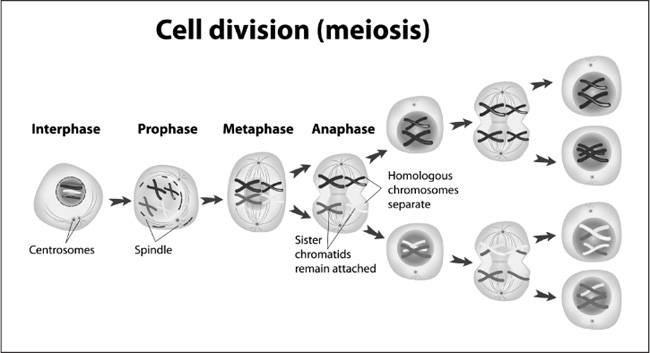Cellular BasicsCell Division |
How are cell structures divided during meiosis? |
Meiosis is just part of a larger process that occurs in either the ovaries or testes. During sperm formation (spermatogenesis), the cells that eventually become mature sperm go through two successive meiotic divisions. This results in four “haploid spermatids” that will develop into mature sperm cells. The sperm are then reconfigured into a cell that is specialized for one thing: fertilizing an egg. Thus, the mature sperm is basically a nucleus with one set of chromosomes, mitochondria, and flagella (for propulsion).
In humans, the cells that develop into mature eggs are present in the ovary before the oogenesis (egg formation) ever occurs. Immature eggs (oogonia) remain in a stage referred to as “meiosis I” until they mature during puberty. During the stage of “meiosis II,” oocytes are ready to be released, but will not fully complete the meiotic process until after fertilization takes place. During the progression from one diploid oocyte to four haploid cells, cytoplasm is shunted unequally to only one cell. The end result is one large mature ovum and two or three very small haploid cells called polar bodies.

In the cell division process of meiosis the resulting cells have half the number of chromosomes as the original cell, which is important in the production of sperm and egg cells.
